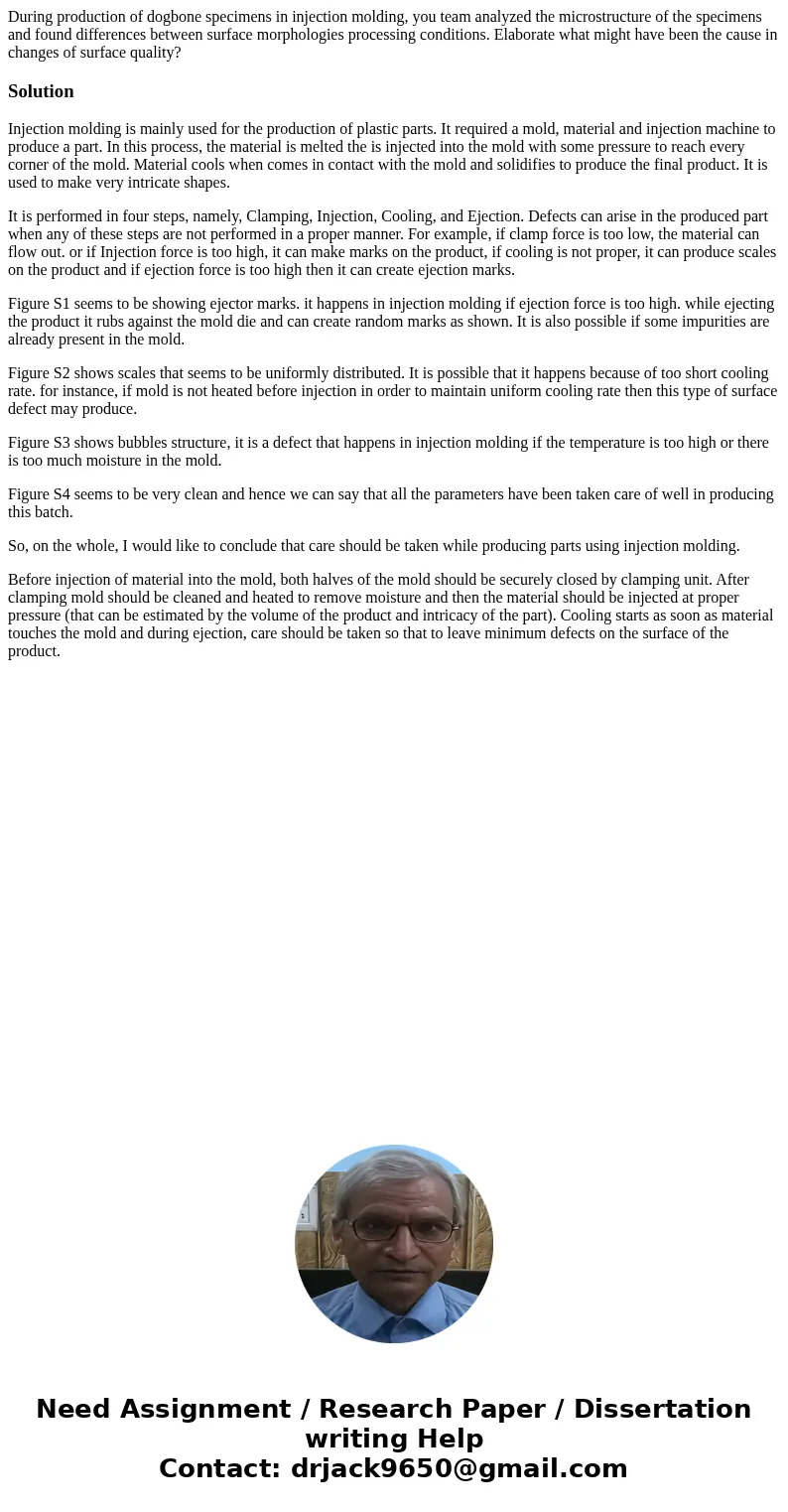During production of dogbone specimens in injection molding
Solution
Injection molding is mainly used for the production of plastic parts. It required a mold, material and injection machine to produce a part. In this process, the material is melted the is injected into the mold with some pressure to reach every corner of the mold. Material cools when comes in contact with the mold and solidifies to produce the final product. It is used to make very intricate shapes.
It is performed in four steps, namely, Clamping, Injection, Cooling, and Ejection. Defects can arise in the produced part when any of these steps are not performed in a proper manner. For example, if clamp force is too low, the material can flow out. or if Injection force is too high, it can make marks on the product, if cooling is not proper, it can produce scales on the product and if ejection force is too high then it can create ejection marks.
Figure S1 seems to be showing ejector marks. it happens in injection molding if ejection force is too high. while ejecting the product it rubs against the mold die and can create random marks as shown. It is also possible if some impurities are already present in the mold.
Figure S2 shows scales that seems to be uniformly distributed. It is possible that it happens because of too short cooling rate. for instance, if mold is not heated before injection in order to maintain uniform cooling rate then this type of surface defect may produce.
Figure S3 shows bubbles structure, it is a defect that happens in injection molding if the temperature is too high or there is too much moisture in the mold.
Figure S4 seems to be very clean and hence we can say that all the parameters have been taken care of well in producing this batch.
So, on the whole, I would like to conclude that care should be taken while producing parts using injection molding.
Before injection of material into the mold, both halves of the mold should be securely closed by clamping unit. After clamping mold should be cleaned and heated to remove moisture and then the material should be injected at proper pressure (that can be estimated by the volume of the product and intricacy of the part). Cooling starts as soon as material touches the mold and during ejection, care should be taken so that to leave minimum defects on the surface of the product.

 Homework Sourse
Homework Sourse